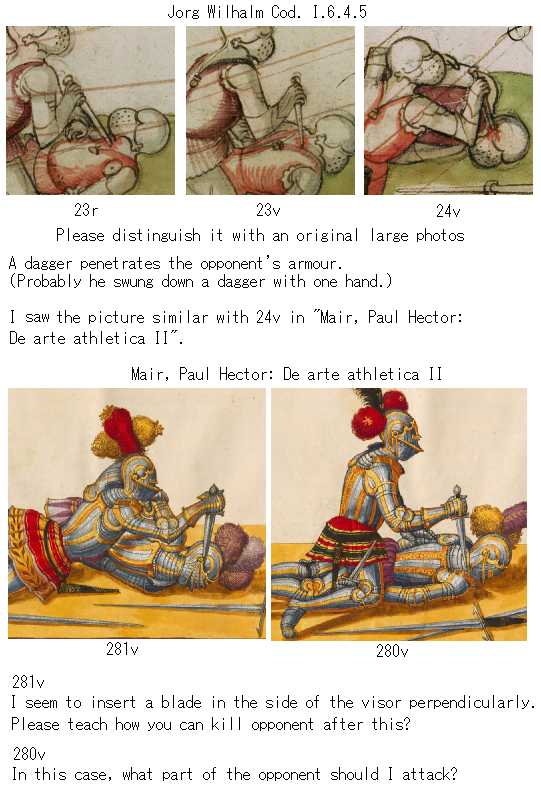Posts: 146 Location: Japan
Wed 28 Jan, 2009 12:26 am
Thank you for replies!
> Randall Moffett
> Does it have any text?
> That'd be the clearest way of getting a solid answer.
I cannot find the text. So I asked you a question on this forum.
Thanks ^^ :)
> James R.Fox
> They could be pushed between plates, but I never heard of one that could be pushed into plate.
I was so, too. But...
-----------------------------------------------------
Spotlight: The
Rondel Dagger
http://www.myArmoury.com/feature_spot_rondel.html
Rondel Daggers in Use
"The slim, long blades were capable of piercing mail and
finding the small openings in the foe's plate armour."
-----------------------------------------------------
I read this and possibly intended... And I asked you a question on this forum.
(I mistook "penetrated holes" for "small openings") ;)
>I would say, therefore that some of
these picture are exaggerated, to say the least, but not all.
Oh, that's exactly what I thought! (The pictures of the Middle Ages has lots exaggerated things...)
>Cutting helmet straps, stabbing eyeslits, and pushing the point Between plates sound good to me.
I think that these are good ways.
Thanks ^^ :)
> Hugh Knight
> Talhoffer's 1449 Ambraser Codex:
>
http://jfgilles.club.fr/escrime/bibliotheque/...es/036.jpg
I knew this site. However, there is not explanation... and I found other site.
http://www.schielhau.org/talhoffer1459_ac_duel.html
-------------------------------------------
tafel 36:
36. Hie hat er In erstochn. (original)
36. Here he has stabbed him. (translated)
-------------------------------------------
ummm, there is very little explanation. It is not written
how he took off the opponent's helmet... :(
> Most medieval art shows an idealized version of armor with far fewer gaps than the real stuff had.
I think so ^^;
Tkanks ^^ :)
> JE Sarge
Thanks ^^ :)
> Jean Thibodeau
Thank you for detailed explanation every time. ^^ :)
> Jean Henri Chandler
Thanks ^^ :)
p.s
I'm sorry. I cannot write detailed answers. (my English is very poor. >< :cry: )
However, generally I understand that all of you wrote it.
